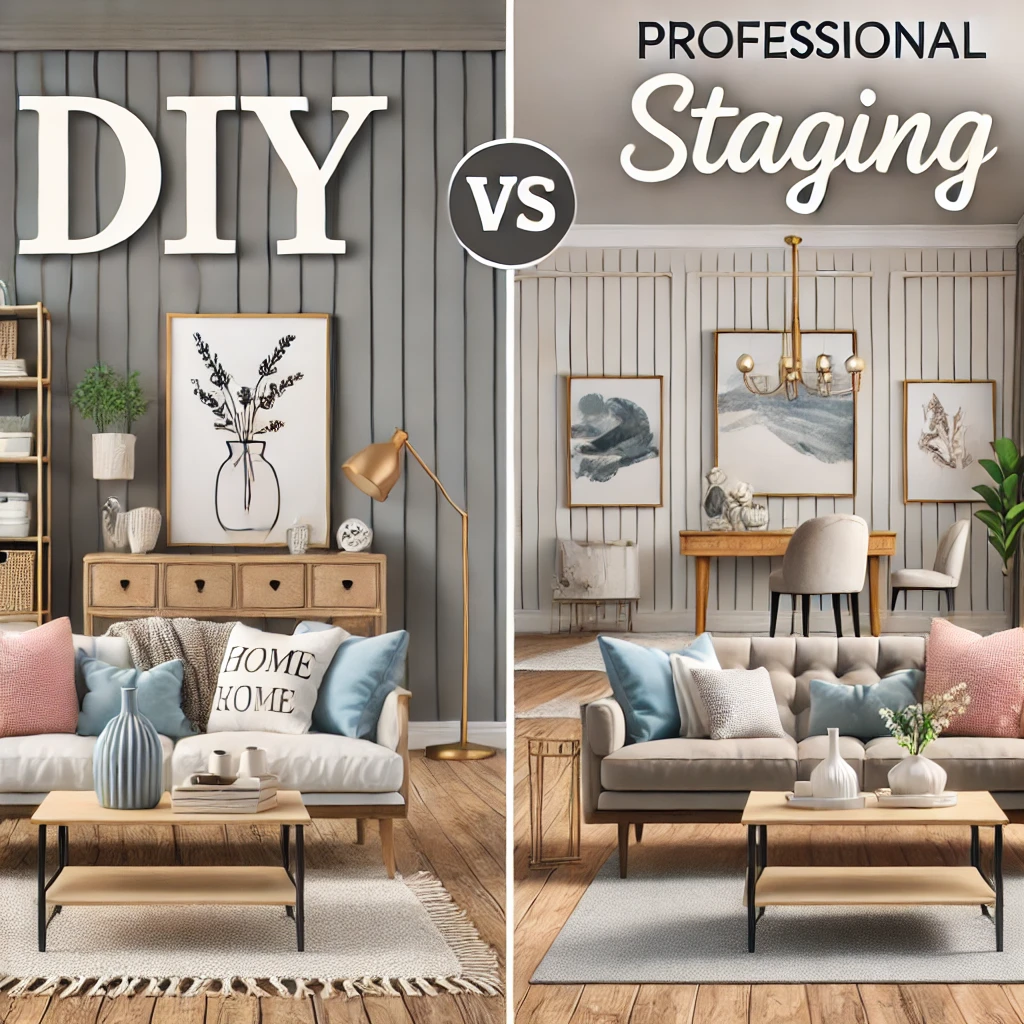
When it comes to preparing a property for the market, staging can play a critical role in attracting buyers and maximizing your sale price. But should you tackle the staging process yourself or hire a professional? Both DIY and professional staging have their advantages, and the best choice depends on your goals, budget, and the specific needs of your listing. Here’s a breakdown to help you decide which approach might be best for you.
One of the primary factors that influence staging decisions is budget. DIY staging can save you money upfront, especially if you already have furnishings or decor on hand. However, professional staging may be worth the investment if you’re looking to boost perceived property value.
DIY Staging:
Professional Staging:
Bottom Line: DIY staging is great if you’re on a tight budget, while professional staging is an investment that can yield returns through higher offers.
Staging requires an understanding of design, flow, and appeal. While you may have a strong sense of style, professional stagers have experience in tailoring spaces specifically to attract buyers.
DIY Staging:
Professional Staging:
Bottom Line: If you’re confident in your design skills, DIY staging may work well. Otherwise, hiring a professional stager ensures a cohesive, market-ready design.
Staging a property takes time, especially if you’re sourcing, arranging, and decorating on your own. If you’re juggling multiple responsibilities, professional staging can save you time and hassle.
DIY Staging:
Professional Staging:
Bottom Line: DIY staging can work if you have ample time and flexibility, while professional staging saves time for those with tight schedules.
Buyers are drawn to clean, welcoming spaces where they can envision themselves living. Professional staging tends to create a more polished, universally appealing look, while DIY staging can bring a more personalized touch.
DIY Staging:
Professional Staging:
Bottom Line: DIY staging works well if you’re aiming for a cozy, lived-in look, while professional staging offers a high-end, polished appeal that generally resonates with buyers.
DIY staging offers the freedom to experiment with different setups, while professional staging follows a tried-and-tested process. If you prefer having full control, DIY might be a better choice.
DIY Staging:
Professional Staging:
Bottom Line: DIY staging offers maximum flexibility, while professional staging provides a structured approach with proven layouts and decor.
Good photography is essential for attracting online buyers, and professional staging can elevate your listing photos by making spaces look their best.
DIY Staging:
Professional Staging:
Bottom Line: If photography is key to your marketing, professional staging can create a stronger visual impact, while DIY staging may work for listings that don’t rely heavily on imagery.
Ultimately, the decision to DIY or professionally stage a property depends on your goals for return on investment. Professional staging can potentially lead to higher offers and a quicker sale.
DIY Staging:
Professional Staging:
Bottom Line: Professional staging is more likely to maximize your ROI, while DIY staging is a cost-saving option that may work in less competitive markets.
Both DIY and professional staging have their merits, and the best choice depends on your budget, timeline, and property’s specific needs. DIY staging can be effective if you have the time, vision, and resources, but professional staging offers the expertise, polish, and appeal that can elevate a listing and attract serious buyers.
At SMAdvice Realty, where vision meets opportunity, we’re here to help you make the best choice for your property listing. Want more guidance on staging your home? Contact us for tips and insights on creating an inviting space that sells.